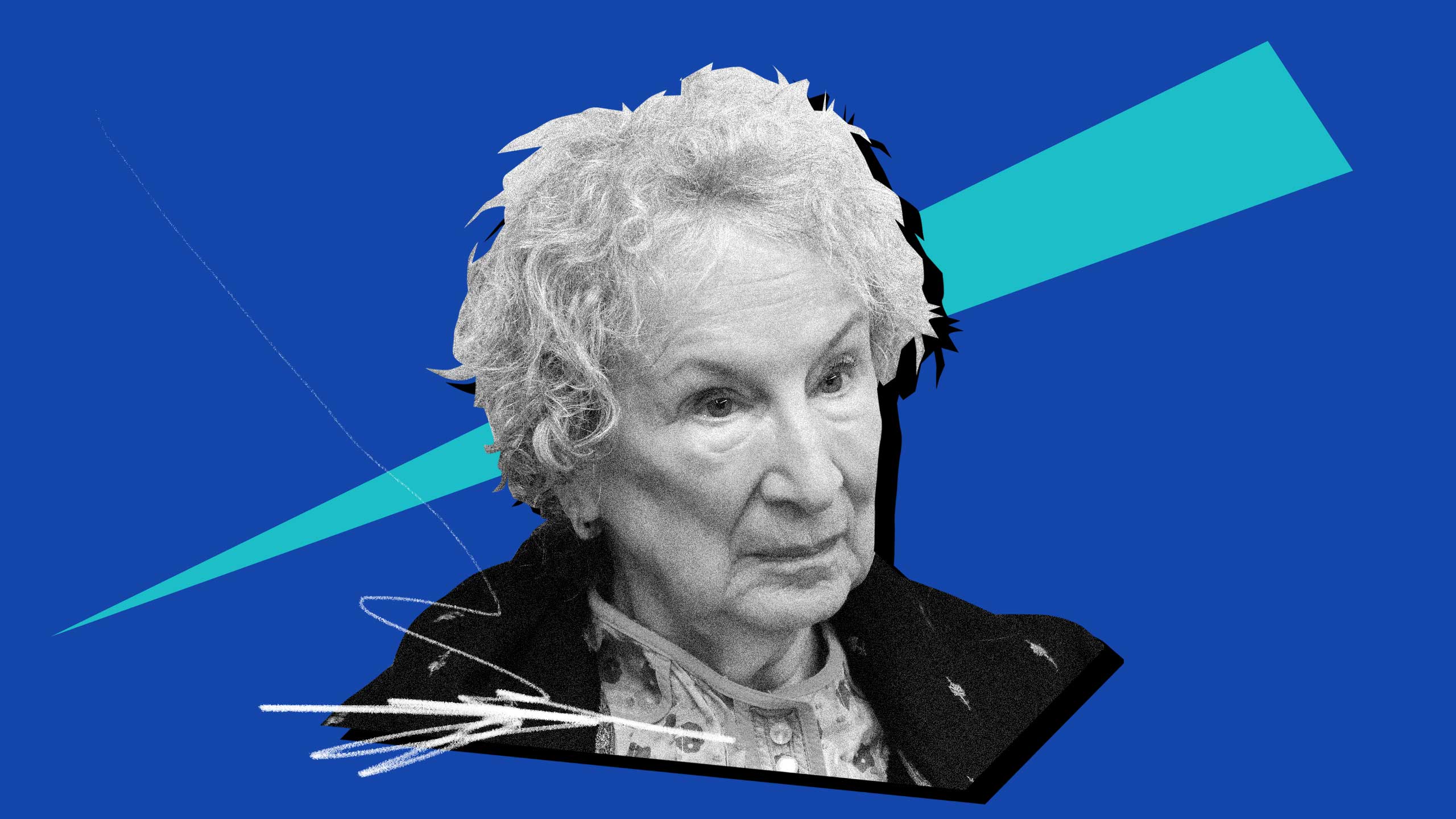Any week where a mainstream news publication publishes a questionably sourced, misleading and transphobic piece of media is a bad week. But a week where three of the biggest and most respected media outlets in Canada publish misleading articles about trans people? That’s a really bad week—one that points to a worrying trend in Canadian media.
Last week, editors and producers at the Toronto Star, CBC and CTV decided it was the time to wade into the “gender war.” Two pieces in particular, op-eds published by the Star and CBC, took off after being reshared on Twitter by bestselling Canadian author Margaret Atwood.
And then over the weekend, CTV News published an “investigation” into why more kids are supposedly experiencing gender dysphoria and seeking out medical interventions. But the piece played into several known and harmful tropes and stereotypes about trans people and medical transition.
These pieces and the editorial decisions to run them are all worthy of critique on their own. But taken together, they paint a narrative reminiscent of the wave of anti-trans so-called feminism out of the U.K. championed by the country’s media and celebrities like author J.K. Rowling.
For trans people and allies in Canada, at a time when legislation like Quebec’s incredibly transphobic Bill 2 is on the table and far-right anti-trans parties like the Peoples’ Party of Canada garner more than 800,000 votes in a federal election, it’s concerning to see these dangerous narratives given mainstream platforms.
Three pieces of misleading trans content
The Toronto Star story, published in the Oct. 16 print edition of the paper, came from columnist and sports writer Rosie DiManno. You may know DiManno as the recipient of Gawker’s “worst lede of all time” award for her truly horrendous story about sexual assault from a doctor that opened with “she lost a womb but gained a penis.”
In her latest column, titled “Why Can’t We Say Women Anymore,” DiManno essentially posits the classic trans-exclusionary radical feminist (TERF) argument that the advancement of trans and non-binary rights with respect to language has come at the expense of “women.” (DiManno doesn’t say cis women, but it’s safe to assume she’s not counting trans women in there.) The piece centres largely around the medical community’s move to discuss uterus-related medical care as for “people with uteruses” or “people who menstruate” rather than for “women,” since not all women have uteruses and not all people with uteruses are women. But DiManno argues that this is actually a “bitchy” move toward “women” and equivalent to “blotting them out.”
The story was shared by Atwood on Twitter, garnering nearly 12,000 likes on her post alone. And while it got star billing in the Star’s News section in a prominent spot in the paper, a rebuttal to DiManno’s column written by a trans writer that ran a few days later was relegated to the paper’s back pages.
But Atwood wasn’t done with her retweets. On Oct. 23, the Handmaid’s Tale author reposted another problematic op-ed about trans people, this time from the CBC.
Written by Jessica Triff, a trans woman from Regina, the piece titled “Trans rights? Yes. Toxic, in-your-face activism? No” argued a similar point that the trans rights movement has come at the expense of “women.” Triff outright suggests that the fact that not all trans people go through medical transition is a “great risk” to women and an “infringement on their rights.”
For the record, trans rights are not at the expense of cis women’s rights, and many of the fears Triff outlines around “single-sex spaces,” such as the spectre of a man pretending to be a trans woman and invading a woman’s space, have been disproven time and time again.
The piece has been quietly tweaked by the CBC since its initial publication to remove problematic phrases like “meaningful transition,” which Triff used to refer to trans people who had experienced therapy, hormone replacement therapy and gender-affirming surgery. Trans-medicalism—the broad belief that being trans is contingent upon experiencing dysphoria and undergoing medical transition—has become an issue within the LGBTQ2S+ community, even as the community has broadly accepted that choosing not to have surgery or go on hormone replacement therapy does not make a person any less trans.
And then, because all bad things come in threes, one more piece of transphobic content dropped in Canadian media over the weekend: an “investigation” from CTV into the apparent “wave” of youth experiencing gender dysphoria, partaking in medical transition and then regretting it.
It’s a narrative we’ve seen before, notably out of the U.S. and U.K. Trans advocates have long pushed back against this obsession with detransitioning youth, arguing that media reports present transition regret as more common than it actually is, and are then used as evidence to put forward anti-trans policies and legislation.
In 2015, the National Center for Transgender Equality surveyed nearly 28,000 people in the U.S. Only 8 percent of respondents reported detransitioning, with 62 percent of those people saying it was only temporary and only 0.4 percent of respondents said they detransitioned after realizing transitioning wasn’t right for them. The most common reason given for detransitioning was pressure from a parent.
How does this connect to the U.K. and J.K. Rowling?
Atwood’s sharing of the two anti-trans articles had many social media users equating her to Harry Potter author J.K. Rowling, who has repeatedly doubled down on her transphobic beliefs.
But for many folks, Atwood’s dipping of her toes into the gender war is unsurprising. She was a co-signatory (alongside Rowling) of the controversial Harper’s letter, which argued for “free speech” in the face of so-called cancel culture. Atwood also defended University of British Columbia professor Steven Galloway, who was accused of sexual misconduct involving a student, and wrote about it in an op-ed for the Globe and Mail.
“In times of extremes, extremists win,” she wrote. “Their ideology becomes a religion, anyone who doesn’t puppet their views is seen as an apostate, a heretic or a traitor, and moderates in the middle are annihilated.”
So it’s honestly not all that surprising—though still worrying—that she’s moved to talking about the “extremists” in the trans rights movement, just as Rowling did before. In a few short years, Rowling’s gone from course-correcting her own books (Dumbledore’s gay now!) to writing explicitly transphobic novels and manifestos on the gender war. Are we at all surprised that a woman whose most acclaimed novel is about cis women’s uteruses decided it was her turn to weigh in on trans rights too?
Why we should worry
But Atwood’s tacit endorsement of transphobia is not the big deal here. Sure, it’s disappointing to see one of my childhood heroes (whose words I have tattooed on my body!) suggest that I should be openly misgendered when I access health care. But it’s the trend of outlets choosing to publish pieces like the ones shared by Atwood that we should worry about.
Say what you will about the whole journalism school rigmarole, but if there was one thing I took away from every single media ethics course, it was not to cause harm. It’s a lesson taught in J-school classes and student newspaper meetings and everywhere else budding journalists come through the pipeline. Do not cause harm. Report the truth, be fair, but do not cause harm.
The DiManno Star piece needlessly posits feminism as a binary between trans rights and women’s rights, with the former coming at the expense of the latter. The Jessica Triff CBC piece as published on Saturday goes against the corporation’s own public Journalistic Standards and Practices, which outline that opinion must not “misrepresent other points of view.” It’s full of unsubstantiated claims, and doesn’t engage with existing scientific literature on how you can definitely be trans even without medical interventions. And the CTV story perpetuates a dangerous and false narrative that transition is something a lot of kids regret.
When we’re talking about this kind of coverage of trans issues, harm is being caused—and it’s harming some of our most vulnerable people in trans youth. Trans youth already have some of the highest sucide attempt rates out of any group. And stories like these give lawmakers justification to make medical transition even harder to access, or to introduce transphobic laws like Quebec’s Bill 2, which would see separate gender and sex markers on ID.
These things can spiral. In the U.S., cis writers, like Jesse Singal, who’ve taken to problematically wading into trans issues have their own groupchat. In the U.K., transphobia in the media is running wild, with journalists on networks like the BBC openly referring to trans women as “biological males” and the prime minister getting asked about trans anatomy by the press.
How to be better
It’s concerning to think that the three pieces published in Canadian media this week are part of a larger trend towards U.K.-style discourse on trans issues. It feels like we’re on the precipice of a descent into a much darker timeline of transphobic vitriol in the mainstream press.
And it’s on these outlets, their editors and their decision makers to walk back off that edge.
The number of trans people, if any at all, who work at outlets like the Star, CBC and CTV is tiny, despite there being more than 75,000 openly trans and non-binary people in Canada. Trans people deserve to be covered by these outlets fairly and without harm.
Editors must think critically about why they are publishing stories like these, and how they’re being presented. As several social media users pointed out, the CBC story’s headline with any other marginalized group would never be published: “Women’s rights? Yes. Toxic, in-your-face activism? No” sounds absurd, and it’s just as absurd to publish that headline talking about trans people. Published work by trans people can’t be relegated to the back pages of the Toronto Star while transphobic headline columnists get top billing. And stories like that CTV doc must be subject to rigorous fact-checking and consultation with trans advocates and groups.
There are tools to help with this. The Trans Journalists Association has a comprehensive style guide for dealing with everything from pronouns to transition narratives and TERFs, and even a cursory glance at it from any of the editors involved in these pieces likely would’ve meant they never left the pitch room.
And above all, outlets like these can actually hire, promote and pay trans writers and editors in meaningful, non-tokenized ways. We’re tired of waking up to see what transphobic nonsense is burning up Twitter this time. We’re tired of watching outlets platform these ideas.
Increasingly it’s more than just hurt feelings at stake: it’s our lives.


 Why you can trust Xtra
Why you can trust Xtra


